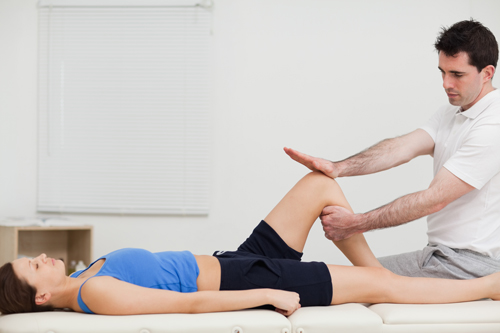
When your osteoarthritic knee hurts, your foot tends to turn outward. This is a “trick” your body has learned, one that is common to many people with mild to moderate osteoarthritis of the knee. The pain can be temporarily reduced by turning your leg outward when you walk or climb stairs.
Other strategies are crucial, however, to keep knee osteoarthritis from progressively interfering with your mobility and activities of daily living. As a start, we can design a physical therapy program for you that would include strengthening the hip and thigh muscles. With increased strength comes increased stability, lessening the likelihood of falls.
Other goals of a physical therapy program would be to increase your knee’s range of motion and decrease pain. We will assess the pros and cons of your use of a knee brace and such aids as a cane or crutches. Heat and cold therapies, as well as treatment modalities such as ultrasound and electroneuromuscular stimulation, can help manage pain.
You may believe that turning out your foot helps your knee feel better, but it is possible that diffi culties with your feet are making your knee feel worse, to begin with. While the most supportive, comfortable shoes are not necessarily the most stylish, wearing what is truly best for your feet can improve the way your knee—and potentially, your entire body—feels.
In addition, custom-made orthotics may lessen foot and/or knee pain. Inserted into your shoes, they can optimize your body’s alignment as you walk and distribute force throughout the feet and the entire lower body. Once we determine that orthotics might help you and you begin wearing them, you will need two to three weeks to become adjusted to their “feel”—but after that time, you just may discover your feet have turned away from their turn-out tendencies.
To achieve the best possible outcome, our specialists at The Jackson Clinics can design a series of progressive resistance exercises that will strengthen the hip and thigh muscles, improve stability and lessen the pain of knee osteoarthritis. Together, we can help you manage this disorder.










